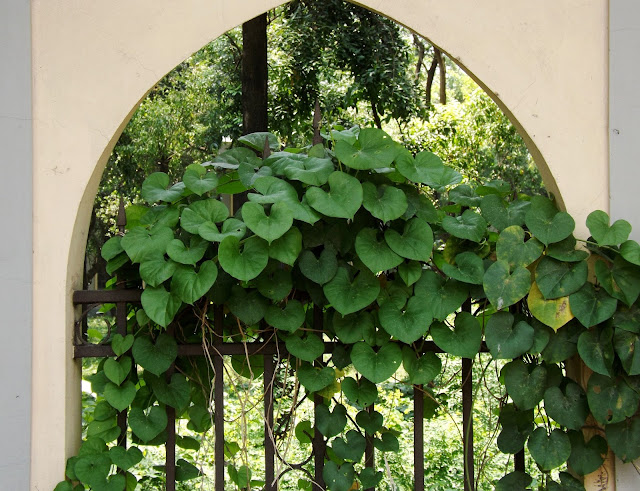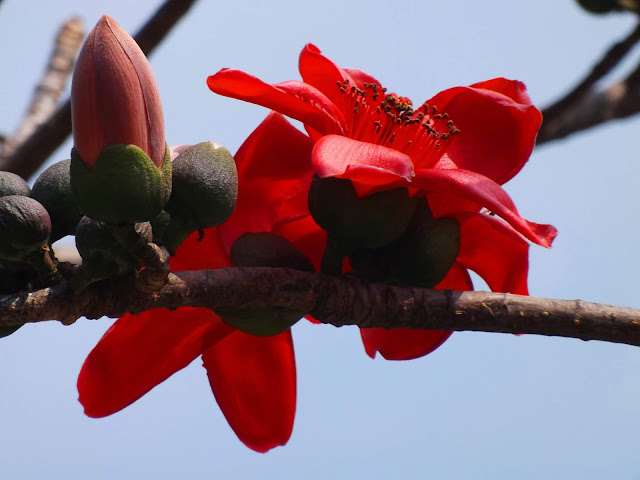Boga or White tephrosia, Tephrosia candida
Boga or White tephrosia (Tephrosia candida, Fabaceae) is an erect shrub with branches attaining a height of 4 m. Upright branches grow from the stem base. Woody stem is velvety, greyish. In Bangladesh, it is found in the tea gardens of Moulovibazar and in parks and botanical gardens.
Other names: Medla, Bogui.
Leaves are pale green, compound, pinnate; leaflets 9-11 pairs, opposite.
Flowers are borne in terminal or axillary Inflorescences, 20-40 cm long. Flowers are are brilliant white, sometimes yellow or pink; petals clawed, round, wings ovate, sightly adnate, 2-2.5 cm long and 1 cm wide. Calix is bell-shaped. Flowering season is autumn. The species name 'Candida' is kept due to its pure white-colored flowers.
Fruits are like beans, linear, covered with brown hair, 8-15 cm long and 1 cm wide; dehiscent, 8-15-seeded. Flowers and fruits can be seen at a time. Propagation is caused by seeds.
Leaves are used for relief from cough and asthma. Seeds contain rutin, rotanone, source of potent insecticide. It helps to increase fertility of soil. Leaves are very useful as fodder. Leaves, bark and roots are used as insecticide and fish poison.
The shrub is found in India, Bhutan, Nepal, Myanmar, China, Malesia, New Zealand, West Indies and Hawaii islands. Although it is a beautiful white flowering plant, its popularity has not increased in our country yet.








Comments
Post a Comment